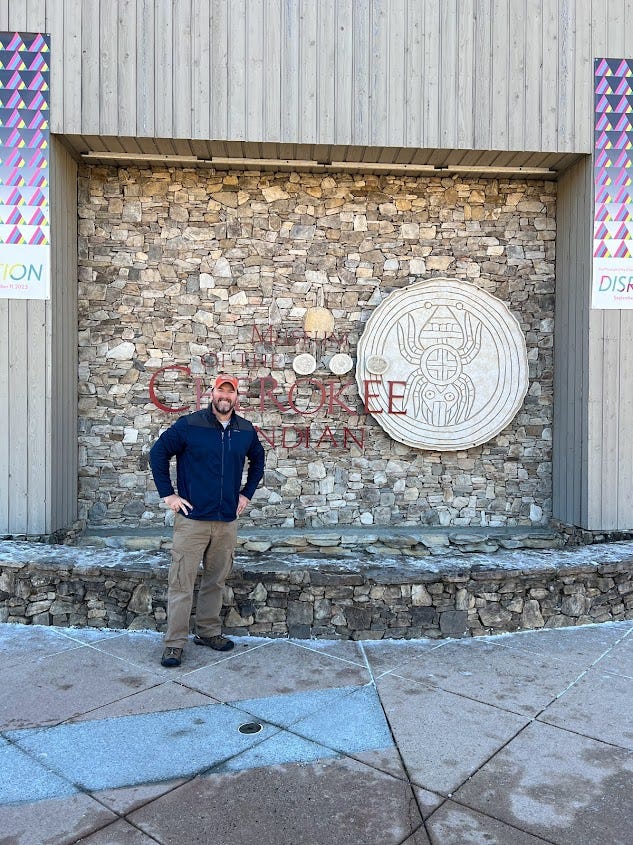Thinking on this week’s pod got me thinking about Cherokee history. As you probably know, much of The Last of the Mohicans was actually filmed in the Cherokee homelands of what is now present-day western North Carolina. If you ever get a chance to visit region, stop by Cherokee and notice a little change: the Museum of the Cherokee Indian is now known as the Museum of the Cherokee People. It’s a subtle shift, but an important one, said Executive Director Shana Bushyhead Condill in a recent interview. “For us, it's important to make sure that even though we are the tribal museum or the official repository of the Eastern Band of the Cherokee Indians, that all of our stores originate here," Condill said. "We are all of this place. As Cherokee Nation, United Keetoowah Band and Eastern Band citizens, we are all of this place.”1
I actually had the chance to visit the museum last December as I made my way home from Kentucky. Shana is a friend of mine and has always been such an amazing ambassador and educator of Cherokee history. The museum, I must tell you, is simply phenomenal. I’ll post some pictures from the trip below, but not of the inside. That you need to see for yourself. What can also see for yourself are the awe-inspiring views of Cherokee Country, including a gorgeous frozen waterfall. In my mind, the Cherokee homelands of western North Carolina and northern Georgia are among the most beautiful places in the country.
Wes Studi
By the way, did you know that The Last of the Mohicans star Wes Studi is Cherokee? He is a member of the Cherokee Nation in eastern Oklahoma and a Vietnam veteran. You’ve seen him in a ton of films including Dances with Wolves, Heat, Mystery Men, and Hostiles. NPR did a story about him a few years ago when he was promoting the latter film. You might enjoy it. https://www.npr.org/2018/01/18/578575379/wes-studi-on-his-cherokee-nation-childhood-and-how-he-discovered-acting
The Mountain
Finally, one thing Shana alerted me to was an effort to rename Clingman’s Dome to its proper name in Cherokee: Kuwohi. We know that placenames matter. And transitioning the name back to its original moniker helps to underscore to residents and visitors that the mountains are Cherokee homelands and the people shall not be parted from them. If you’d like to support that movement, there is a petition you can sign (I even got my mom to sign). It is here:
https://www.change.org/p/restore-kuwohi-to-the-mountain-presently-known-as-clingmans-dome
Cherokee history
Ok, one more thing. If you’d like to learn more about Cherokee history, a great place to start is via Cherokee people. Here are the websites for the Eastern Band of Cherokee Indians, the Cherokee Nation, and the United Keetowah Band of Cherokee Indians in Oklahoma:
https://ebci.com/
https://www.cherokee.org/
https://www.ukb-nsn.gov/
https://www.wcnc.com/article/news/local/wake-up-charlotte/museum-of-cherokee-indian-north-carolina-new-name-renovations/275-fe023c8a-8ce0-4c0b-b2e5-0593a32362dc






